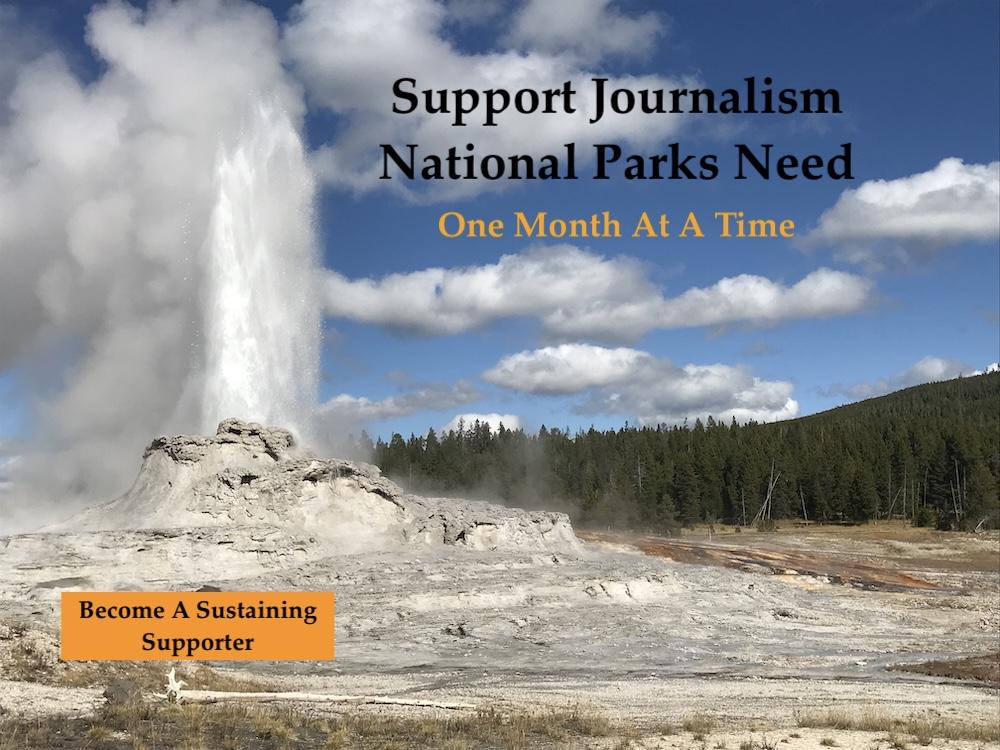The clock is ticking down to the National Park Service's centennial in 2016, and the focus of the PR campaign has been on attracting a new generation to the parks. But how far should the agency go in trying to lure millennials and a more diverse visitor?
At least one Park Service veteran wants to see the agency "regain the spirit of John Muir and Teddy Roosevelt."
And that's the dilemma the Park Service and its New York City advertising agency face. Should they hot wire the National Park System for Wi-Fi so visitors can share their latest snapshot or selfie with their Instagram or Facebook friends and present more interpretive programs for digital delivery and send fewer rangers into the field to interact?
Or should the Park Service focus on why national parks exist in the first place: to preserve sublime settings and remind us of our poignant American history and rich cultures?
The other day a column popped into my inbox from the Traverse City Record-Eagle, a newspaper in Traverse City, Michigan, just outside Sleeping Bear National Lakeshore. Written by a retired Park Service veteran of 40+ years in the system who uses the pseudonym "Max Old Bear," the point of the column seemed to be that the Park Service doesn't need to reinvent itself.
Now, Max's specific gripe in last Saturday's column was focused on a ribbon of asphalt the lakeshore has laid through a section of its forests to accommodate cyclists and hikers. Come winter, Max went on, the multi-use path is even groomed for skiers. ("The skiers even have the chutzpah to whine about snowshoe users on 'their' tractor-packed trail," he huffed.)
And where there first were cyclists and then skiers, the trail now is even used for races, he noted.
"The people were smart enough to set aside this land as a national treasure and entrust it to the stewardship of the National Park Service because the National Park Service had the trust, history and obligation of resource preservation," wrote Max. "I urge the Park Service to go back to its roots. At least, do no harm. Regain the spirit of John Muir and Teddy Roosevelt."
In the months ahead, this sort of debate will surely surface again and again. How far should the Park Service go in trying to bring in younger generations and different racial audiences to the parks? Is the agency losing touch with the spirit of John Muir and Teddy Roosevelt? Muir's legacy recently was called into question recently during a conference in California. As far as we know, no similar shrug of the shoulder has been given to President Roosevelt, arguably the greatest conservationist ever to have called the White House home.
But as the drive towards the centennial in 2016 grows, how much will the Park Service leadership give in in the guise of building a visitation base to succeed the Baby Boomers? How much should it?
What do you think?

 Support Essential Coverage of Essential Places
Support Essential Coverage of Essential Places







Comments
Things haven't changed much. Gary knows it all insults anybody who disagrees with him... As for satellite taking over everything, EC's right. Ain't going to happen anytime soon.
I see both sides, but I tend to prefer better cell coverage for safety purposes if we can do it in a way that does not impact the landscape. Since the backcountry is always empty anyway, technology will only impact those that want to use it. For the purists, they can always go in without a cell phone, or a GPS for that matter.
I don't know the specifics about that paved trail, but I remember a discussion a long time ago about creating a trail that parallels the main road to separate cyclists from car traffic. Is that the same thing?